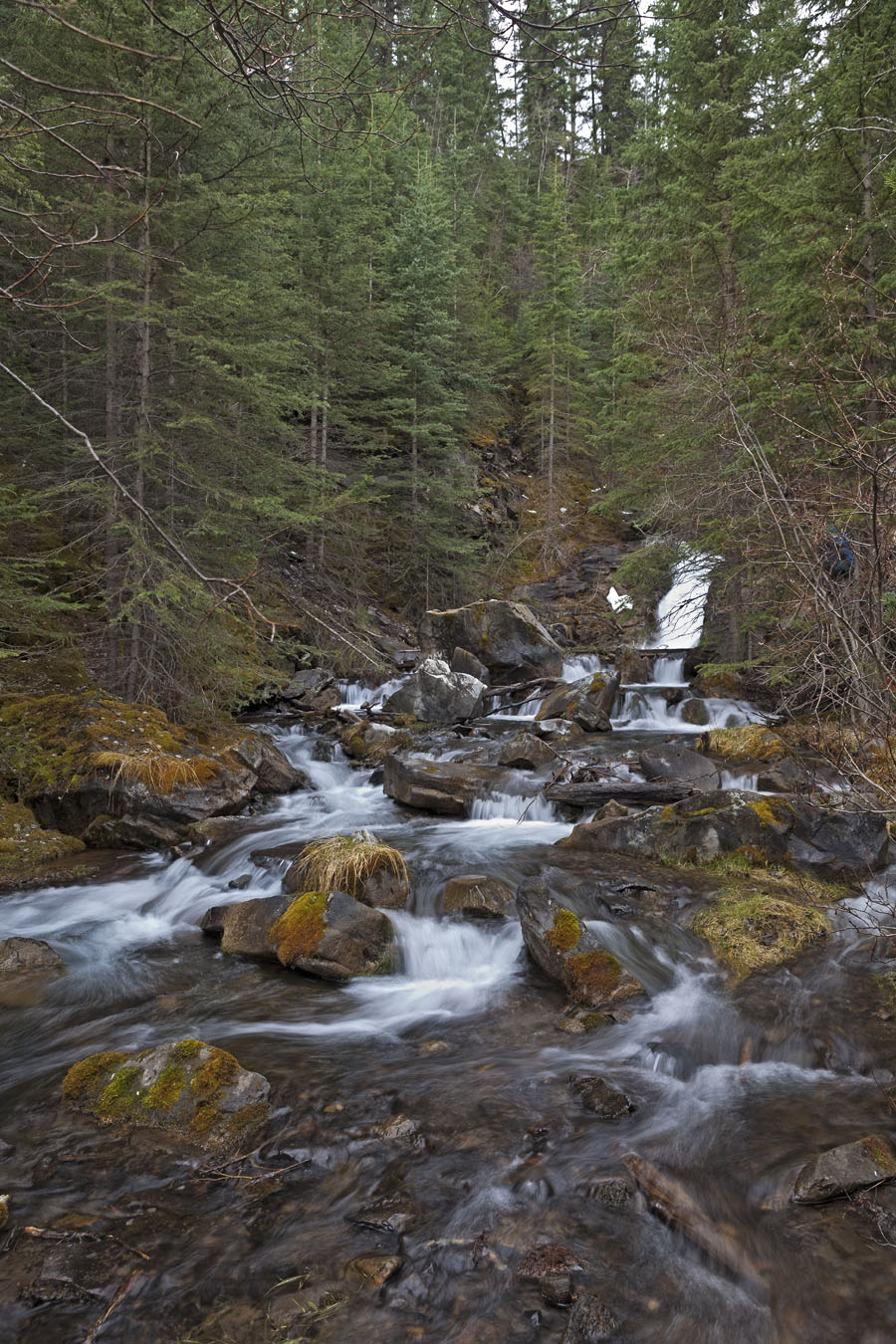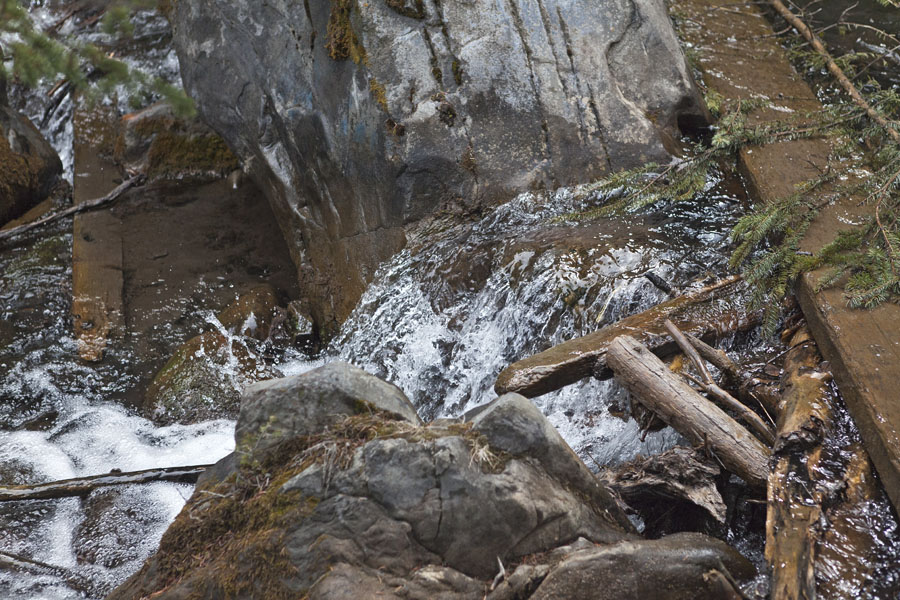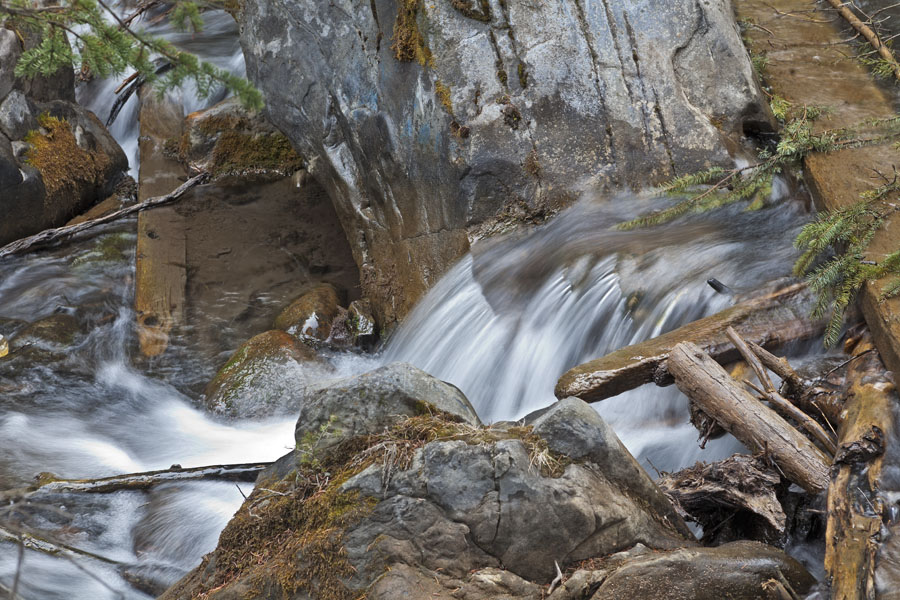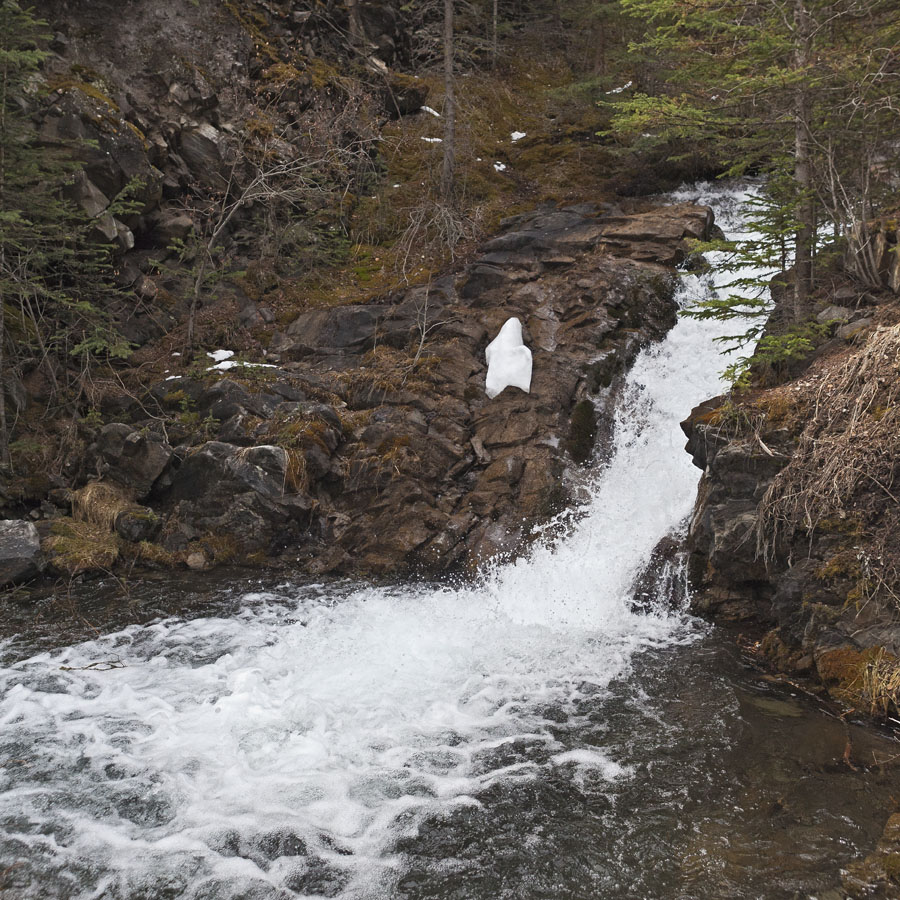Spring has been late arriving in our part of the world. Slowly, we see signs that it’s coming. On Saturday, accompanied by Greg Bourque I went to nearby Canmore Creek to take some shots of running water. The area we visited is quite shaded and I didn’t know what to expect, bare ground and running water or knee-deep snow and a frozen stream. Happily it was the former. Spring has indeed arrived in this small area and we were able to get some very nice shots. My first picture is wide angle (vertically) taking in a number of the small cascades in this relatively steep section of the creek, downstream of the small waterfall. If you note a small, blue patch in the trees on the upper right hand side, that’s Greg positioned to shoot the waterfall. This picture was taken in manual mode with the ISO at 50, the aperture at f11.0 and the shutter speed at 3/10 sec. It’s a slow exposure intended to create the “streaming” look to the flowing water.

We did a lot of experimentation with shutter speeds to create different “looks” to the scene by varying the degree of “streaming”. My next two shots are identical except for the shutter speed I used. The scene is a close-up of a small cascade, capturing a lot of the detail of the water flow and the immobile surroundings. The first example was taken with a very fast exposure, 1/1000 second. At this speed, I pretty much stop the action. The water is “frozen” in time, captured in its position for the brief period when the photograph was taken. You can see for example, the water droplets suspended in air and undistorted bubbles in the water at the base of this small cascade.

The following photograph shows what happens when you slow the opening and closing of the shutter, in this case to 3/10 sec. The look has changed dramatically. The explanation is simple. Assuming the water is flowing at a speed of 2 feet per sec., it will travel a distance of about 7 inches during the time the shutter is open. Rather than “freezing” a droplet of water in one place, the camera records this droplet as a line about 7 inches long. The total of all the droplets moving 7 inches in the course of this photograph creates the softer, smooth line appearance of the water. By comparison, the water droplets in the prior picture would travel only .025 inches (.625 mm) during the 1/1000 sec the aperture was open. If you look again closely at the previous picture, you will see some minor distortion of the drops splashed above the rock in the foreground. Those drops were recorded moving a little bit but it’s barely discernible.

I saved the waterfall for last. This one’s a fast exposure, taken at a shutter speed of 1/1000 sec. This is one case where the camera can pick up detail (the suspended water droplets) that you won’t see as clearly with the human eye.

It turned out to be a good day for this type of photography. The spring runoff is underway but not yet at its peak. Lots of water but not so much we couldn’t get near the creek.

Awesome!